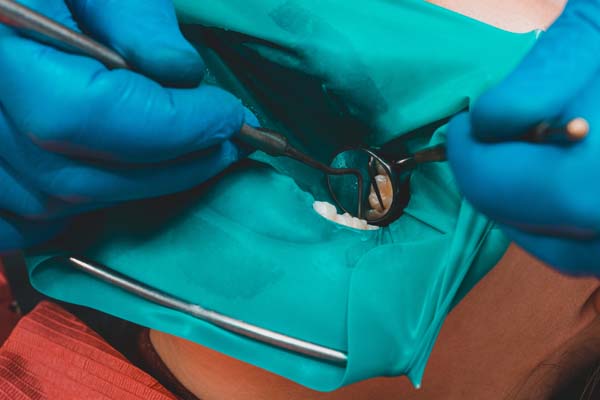How a Dental Filling Can Treat Tooth Decay

The treatment for a cavity is a dental filling. The onset of tooth decay manifests as small dots on teeth. Regular dental checks enable the dentist to spot the early stages of cavities. For some people, the discovery of cavities comes a little late. This is when a significant amount of filling can help. If you want to know how a dental filling can treat a cavity, here are the details.
What to expect
Being at the dental clinic at the time recommended by the staff will give them enough time to prepare and sanitize the treatment room. This ensures everyone’s health during the current pandemic. This will provide the dentist enough time to perform digital X-rays, discuss the results, and ask relevant questions before starting the treatment. Then, the dentist will conduct a visual inspection of the patient’s mouth.
The dentist will then start the treatment by numbing the area of the decayed teeth. Doing so will ensure the patient’s comfort during the dental filling procedure. The dentist will start drilling the decayed parts of the tooth once the local anesthetic takes effect. Cleaning out the cavity and etching it will follow. Etching it will roughen the space. This will make the filling stick better to the cavity’s walls.
The patient will rinse off the etching solution or gel. Drying the tooth will follow. The dentist will then fill the prepared cavity with the filling of choice. The process will only take minutes. The mouth will remain numb for the next few hours.
Types of available dental fillings
The dentist will offer different types of fillings available in the dental clinic. Choosing the right type of dental filling depends on the patient’s needs and preferences. The dentist will recommend fillings capable of improving the patient’s dental health. Here are the common choices:
- Composite fillings. These can be a combination of glass and resin. Composite fillings are good for small to medium cavities. Dentists like using composite fillings on teeth for a moderate level of chewing. These are the teeth between the front teeth and back teeth.
- Amalgam fillings. Dentists have been using amalgam fillings for at least a hundred years. An amalgam filling is a combination of metals. One of the metal components is mercury. The noticeable silver coloration of amalgam fillings makes them appropriate for the back molars.
- Gold fillings. This is an expensive and durable dental filling. Some people like the look of gold on their teeth. The color seems to announce an elevated financial status or trendiness. A gold filling can last for 10-15 years before the patient needs replacement.
- Glass ionomer. This dental filling is a combination of glass and acrylic. It releases fluoride into the cavity to help protect the tooth. It is less durable than the other fillings. A glass ionomer filling only lasts for about five years.
- Ceramic fillings. These are porcelain fillings. They are tooth-colored and stain-resistant. Ceramic fillings are ideal for front teeth. These are almost as expensive as gold fillings.
The right dental filling can treat your cavity and improve your dental health
Cavities can cause tooth loss if they do not get the right treatment. Routine dental checks can catch the onset of dental decay. Your dentist can suggest the right dental filling for your needs. Caring for your teeth needs help on occasion. Filling cavities can help maintain your oral health.
Are you considering getting a dental filling in the Burbank area? Get more information at https://www.mediacenterdental.com.
Check out what others are saying about our dental services on Yelp: Dental Filling in Burbank, CA.
Recent Posts
Preparing for a tooth filling? Tooth fillings, also known as dental fillings, are one of the most common restorations used in dentistry. They are used to literally fill a tooth once infected areas have been removed. Long ago, tooth fillings were only offered in a couple of select materials; however, modern-day technology has allowed for…
Dental fillings typically last between 10 and 12 years before they are more vulnerable to coming loose and requiring special dental care to be repaired. This review discusses how a dentist can treat a loose dental filling, along with insights into how long you can expect filings to last, the signs of a loose dental…
The most popular way to treat cavities is with dental fillings. Cavities are holes in the teeth caused by decay, often from overindulgence in sugary foods and drinks like candy and soda. They are used to fill these holes in the teeth and prevent further tooth decay. Fillings can be made of materials such as…
Dental fillings are the first line of defense when it comes to stopping tooth decay in its tracks. Tooth decay is caused by the acids created by oral bacteria. These microorganisms feast on food particles that are left on teeth surfaces after meals, converting the sugars in them into acids that eat away at teeth…


